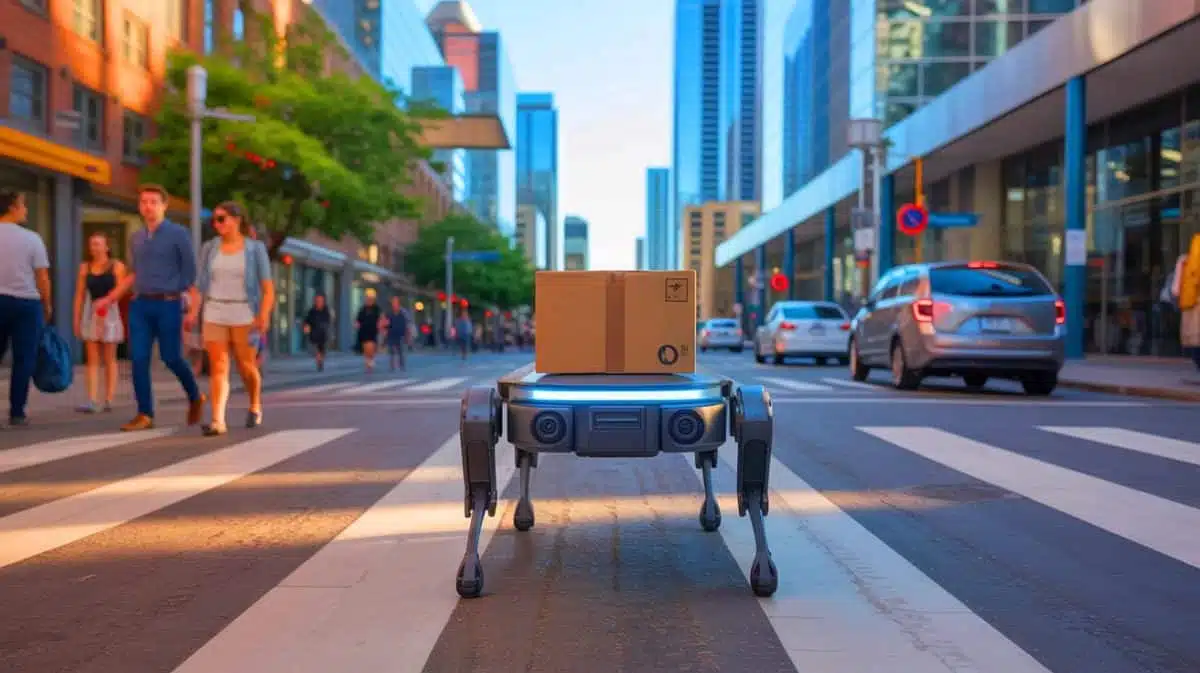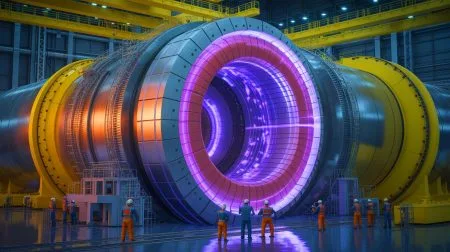| IN A NUTSHELL |
|
In a groundbreaking move toward revolutionizing the e-commerce industry, a U.S.-based parcel delivery platform, Veho, has partnered with the robotics leader RIVR to introduce wheeled-legged robots. These robots are designed to enhance delivery efficiency and quality, particularly in urban settings. The initial trials have begun in Austin, Texas, with plans to expand to more markets. This innovative approach not only aims to speed up the delivery process but also to relieve human delivery drivers from physical strain, allowing them to handle more deliveries efficiently.
The Partnership: Veho and RIVR
The collaboration between Veho and RIVR marks a significant step in the evolution of parcel delivery. Veho, known for its advanced e-commerce delivery platform, has joined forces with RIVR, a company specializing in cutting-edge robotics. Together, they aim to streamline the delivery process by introducing robots capable of navigating the last 100 yards to the consumer’s doorstep. This partnership reflects a commitment to improving the delivery experience and economics for consumers and brands alike.
Veho’s CEO, Itamar Zur, emphasizes that this initiative is about transforming shipping from a cost center into a value driver. During the initial phase, a RIVR employee will accompany each robot to ensure safety and delivery quality, providing valuable insights into the robot’s performance during real-world deliveries. This hands-on approach not only guarantees a smooth transition but also helps in refining the technology for broader deployment.
RIVR’s Technological Advancements
RIVR’s wheeled-legged robots are at the forefront of technological innovation, featuring precision engineering and robust safety mechanisms. These robots are equipped with adaptive mobility, allowing them to navigate complex urban landscapes, such as stairs, gates, and uneven terrain. This capability solves the last 100-yard challenge, which is often the most complicated part of the logistics chain.
Unlike traditional delivery methods, these robots operate in parallel with human drivers, enhancing delivery speed and efficiency. While drones have their place in rural deliveries, RIVR’s robots are specifically designed for dense urban environments. This focus on urban logistics underscores RIVR’s mission to bring automation to the final few meters of every delivery, proving that innovation can significantly improve even the most challenging aspects of e-commerce.
Implications for the Delivery Industry
The introduction of wheeled-legged robots by Veho and RIVR is poised to redefine the delivery industry. By allowing robots to handle the physical aspect of deliveries, human drivers can focus on optimizing routes and managing more deliveries simultaneously. This approach not only increases the overall delivery capacity but also enhances the quality of service provided to customers.
Moreover, RIVR’s robots are designed to operate in tandem with human efforts, ensuring that the human touch in customer service is not lost. This synergy between humans and robots offers a glimpse into a future where technology and human intelligence work hand-in-hand to deliver smarter, faster, and better services. The potential for these innovations to transform logistics is immense, with the possibility of setting new standards for delivery efficiency and customer satisfaction.
The Future of E-commerce Deliveries
As e-commerce continues to grow exponentially, the demand for efficient delivery solutions becomes increasingly critical. The partnership between Veho and RIVR represents a forward-thinking approach to meeting this demand. By deploying robots equipped with General Physical AI, the companies are paving the way for scalable urban robotics that can handle the complexities of modern logistics.
Looking ahead, the goal is to deploy one million delivery robots, fundamentally altering the landscape of e-commerce logistics. This ambitious vision not only promises to enhance delivery speed and efficiency but also aims to make the delivery process more human-centered. The challenge lies in expanding this technology across different markets while maintaining the high standards set during the initial trials in Austin.
The integration of robotics into the delivery industry marks a new era of innovation and efficiency. As Veho and RIVR continue to refine their technology and expand their reach, one must wonder: how will the broader adoption of robotic delivery systems shape the future of e-commerce and urban logistics?
Did you like it? 4.7/5 (25)








Wow, this sounds like something out of a sci-fi movie! 🚀
How will these robots handle bad weather conditions? 🌧️
Isn’t this going to take away jobs from human delivery drivers?
Thank you for the great article! Very informative. 😊
What happens if the robot gets stuck on a obstacle?
Interesting technology, but isn’t it costly to maintain?
I can’t wait to see these robots in action in my city!
How do they ensure the security of the packages during delivery?
These robots are so cool! Are they available for public viewing?
Do they make any noise while moving around?